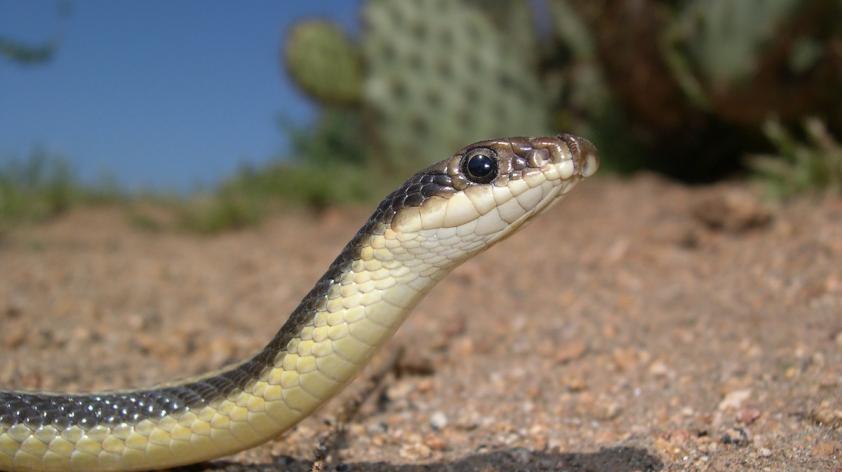
Patching Together the Biology of a Rare Snake
For the past three years I have been attempting to study one of America’s least-known snakes – the coastal patch-nosed snake Salvadora hexalepis virgultea. This interesting denizen of coastal sage scrub and chaparral habitats is named for the peculiar “patch” on the front of its snout that is believed to aid in digging up lizards and their eggs. The coastal patch-nosed snake is found from San Luis Obispo County into Northern Baja California, yet its biology still remains a mystery. Some call them rare, others call them secretive but few biologists in San Diego have ever been lucky enough to see one.
I happen to be lucky in that the 800-acre Safari Park Biodiversity Reserve (adjacent to the Safari Park) contains a healthy population of patch-nosed snakes. Over the past 20 years I have been working in the reserve and have (along with many colleagues) marked nearly 100 of these snakes. They are considered a California Species of Special Concern, yet they have never been studied. Although they are protected from take, further studies may reveal they may be more threatened than was previously believed as much of the remaining habitat for the coastal patch-nosed snake has been converted to habitats unsuitable for the species.
Secretive species such as the coastal patch-nose are difficult to study because finding decent numbers of them is often challenging. In 2014, the drought made my task even more difficult – after logging hundreds of field hours, only a single snake was found. The following year was better as we finally had some decent rains in the region and another 11 snakes were found in just a few months.
We had planned on investigating all aspects of this snake’s ecology via radio telemetry. Once a radio is surgically implanted by our excellent veterinarians at Harter Hospital, I would be able to follow the snakes on a daily basis to discover their home range size, daily and seasonal movements, habitat requirements, reproductive biology and diet. Unfortunately, the snakes were not the right size for internal radio transmitters. Most snake biologists use radios that are less than 8% of the snake’s body mass and radios should only be surgically implanted two to three times a year (radio battery life is limited to radio size so they need to be swapped for new batteries every 3-10 months). Our radios are less than 5% of snake body mass, but the snakes are a thin, fast-moving diurnal species, so the radios just don’t fit their thin bodies. Smaller radios only last up to two months and we do not feel comfortable with so many surgeries on individual snakes over a year. We have been fortunate enough to have two snakes large enough for internal transmitters but using only exceptionally large snakes in the study will bias the study toward large, old adults and may not give a proper representation of the home range for the entire population.
As a possible solution to these challenges external radio transmitters were then considered. External transmitters are used in many animal species and they have been successfully used to gather data in some snakes in Europe and Africa. The tiny transmitters (1.2 grams) are glued or taped to the rear portion of the snake and studies have shown they do not impede movement or reproductive activity in the snakes. Unfortunately, coastal patch-nosed snakes enjoy living a life in cactus and have been able to peel their transmitters off in a matter of days.
Although this study has been a challenge, we are getting some very good data that can help aid the species. From our 95 captures, we now have a good idea of the habitat in which the snakes thrive. Based on the two snakes that have been tracked, we know they use at least 5 hectares (and likely even more) of habitat annually. Also, by radiographing captured snakes, we have been able to identify prey species and the number and size of the eggs in gravid females. In addition, blood samples that we have collected reveal the health of our population of snakes and identify any parasites or illnesses the animals may have. We have even been able to collect small samples of saliva to ascertain whether the snakes have any toxins (it has been stated that they may be rear-fanged and possibly possess a weak venom to paralyze their lizard prey).
As snake numbers once again rise with increased rainfall, we hope to gather more information on the coastal patch-nosed snake and reveal even more secrets from this iconic California species.













